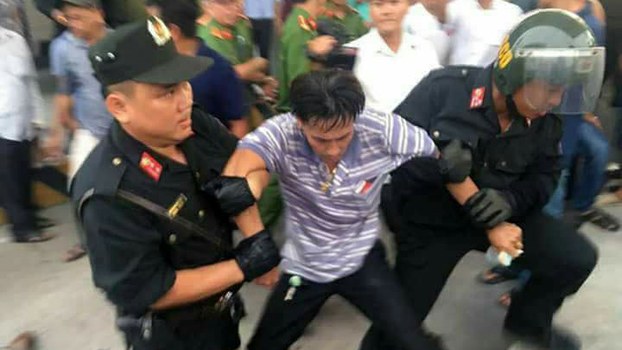




Vietnam will audit several construction projects under a government-endorsed development scheme in the coming year, an official said Tuesday, after protests over a tollbooth collecting fees for one such project led to its suspension amid questions over transparency.
General State Auditor Ho Duc Phoc said the investigation would include such large scale projects under the Build-Operate-Transfer (BOT) scheme as the Viet Tri Ba Vi Bridge connecting Vinh Phu and Phu Tho provinces, the upgrading of Highway 18 linking Quang Ninh and Bac Ninh provinces, and the Deo Ca Road Tunnel between Phu Yen and Khanh Hoa provinces.
Also on Tuesday, at a meeting with voters in Can Tho municipality, National Assembly chairman Nguyen Thi Kim Ngan admitted that many BOT projects “have mistakes,” but maintained that the policy of promoting BOT investment is an effective way to attract capital for infrastructure development.
Under the BOT model, investors transfer infrastructure projects to the state after building and operating them for a certain amount of time.
The shift in official tone towards BOT projects followed an order by Prime Minister Nguyen Xuan Phuc on Monday to temporarily close the Cai Lay tollbooth in Tien Giang province following weekend protests by drivers who say its location is unfair and that the fees it collects are too high.
Phuc ordered the month-long suspension following an urgent meeting to address public anger over the tollbooth with the Ministry of Transportation and the chairman of the People's Committee of Tien Giang, saying the station’s operations required further review.
The tollbooth collects fees from drivers to earn back the cost of building a 12-kilometer (7.5-mile) route bypassing Cai Lay city along National Highway 1 under the BOT scheme.
Drivers have expressed their opposition to the tollbooth since it opened in August by paying the fees in either extremely small or large denominations, and causing the booth to open its gates repeatedly to alleviate traffic that had built up while operators attempted to make change.
Other sources told RFA that anger over the tollbooth stemmed in part from a lack of consultation with the public before it was approved and the project’s lack of transparency.
Tollbooth proposals
According to official media, Monday’s meeting produced three options that the government will consider to resolve the tollbooth situation.
In one scenario, the toll station would remain where it is on National Highway 1, but authorities would work to “reinforce drivers’ understanding of the situation,” as well as to “improve the tolls,” although it was not immediately clear whether the tolls would be reduced.
The second option would involve authorities moving the tollbooth to the bypass and negotiating with investors, as doing so would change the timeframe for revenue collection.
A third suggestion could see two separate tollbooths set up—one on the highway and one on the bypass—to collect different tolls.
In late August, fees at the tollbooth were reduced from 35,000-180,000 dong (U.S. $1.54-7.92) to 25,000-140,000 dong (U.S. $1.10-6.10), but the decrease did little to appease drivers, and protests led to a three-month suspension of operations that ended on Nov. 30.
But drivers continued to resist through the weekend—in some cases getting into confrontations with toll operators and requiring cranes to remove their vehicles—causing the station to open its gates as many as 20 times a day to free up traffic, and prompting Phuc’s decision to shut it down.
After the decision was announced, drivers poured onto National Highway 1 on Monday evening to celebrate, with car horns blaring.
However, the Ministry of Public Security has called on local police to investigate and gather information about anyone “inciting public disorder” at BOT tollbooths, including Cai Lay station.
Reported by RFA’s Vietnamese Service. Translated by Emily Peyman. Written in English by Joshua Lipes.